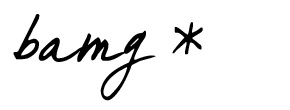It is always supported by three references that Blandine Galtier produces in his workshop. The fruit of his work is imbued with these. There are two collections of poems by Émile Verhaeren, “Les campagnes hallucinées” and “Les villes tentaculaires”, which deal with the industrial and urban invasion of the countryside and its inescapable disappearance. Then comes his fascination for an apocalyptic (cinematographic) aesthetic; a way of questioning man’s need to build inexorably, to measure himself against nature. And finally archeology, as a logical consequence of these two references, this desire to show clues revealing the functioning of a civilization disappeared.
The artist works mainly under the impetus of a project. The goal to be attained (in a given time and following a defined theme) generates a positive pressure as well as an intense investment that she particularly likes. Each new project is a deliberate endangerment especially by experimentation (out of his comfort zone), learning new techniques and that at the service of his idea. If Blandine Galtier masters perfectly the traditional engraving techniques of etching and aquatint, she sees in them tools that sometimes need to be fleshed out to allow an exact restitution of what she wishes to express.
It is in this context that she apprehends for example the carborundum, a singular technique allowing her to translate the mud, a very present subject on a construction site which she will deliver her artist’s eye. Each time, it is a question of finding the right answer and therefore the right medium in phase with his thought.
In this spirit appears the embossing of the paper. “Still Life” is a series on the theme of the highway. The artist removes all references to the people who erected these infrastructures. (The simple fact of showing these roads is enough to evoke the Man).
Embossing intervenes to signify what can not be perceived in the image: movement and noise. Thus, are associated with the engraving of arrows and curved lines only revealed by the shadows on the paper. The subject thus treated offers a double reading: the confrontation of a static, cold figurative engraving with the strong presence due to the play of contrasts; the apprehension of silent graphic lines, sensitive impregnated in the paper taking us to an elsewhere, a form of reverie. In the same way, it is common for Blandine Galtier to cut his plate along the contours of the shape in order to free it and make the representation interact with the paper. The latter is then more than a mere print medium, but contributes to the understanding of the image.
Blandine Galtier is an observer, a subjective witness of our urban landscape. For the factories, like the Feyzin refinery, it has the motorway exchangers, architecture in general, a form of fascination. The artist sees poetry and that’s what she tries to translate into her work. How to give one’s own view of these constructions, to transmit this poetry that it reveals? Thus, Blandine Galtier, in his research, tries to understand where this beauty comes from to better show it to us.
The work of the artist is marked by three recurring components: the contrast – use of black and white, the light – revealed in particular by the reliefs in the paper, and the line – whether figurative, graphic or abstract. If Blandine Galtier’s representations are still rooted in the real, his interpretation sometimes makes the image shift to the side of abstraction. It is perhaps at this moment that architecture, the urban landscape give way to poetry.
The whole of the artist’s production is crossed by one thing: Man and his need to erect buildings, Man and his incessant struggle against the forces of nature.



